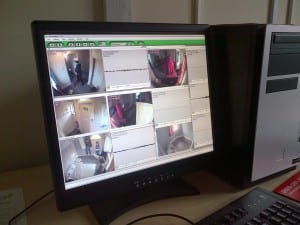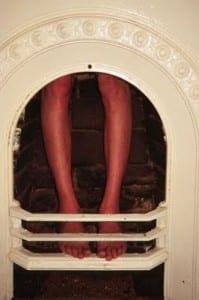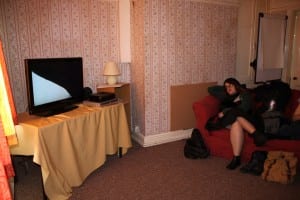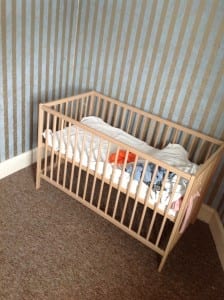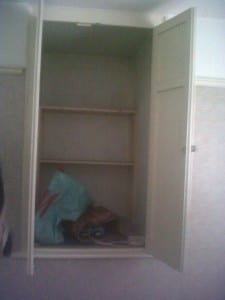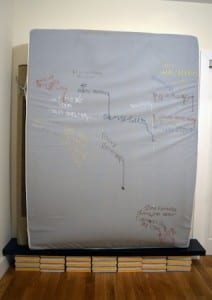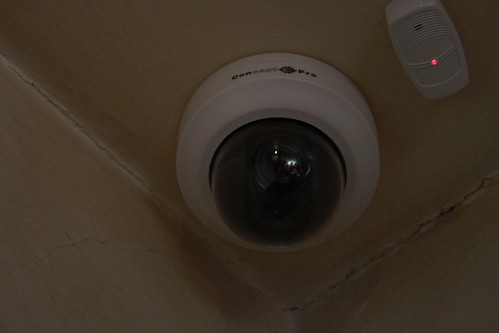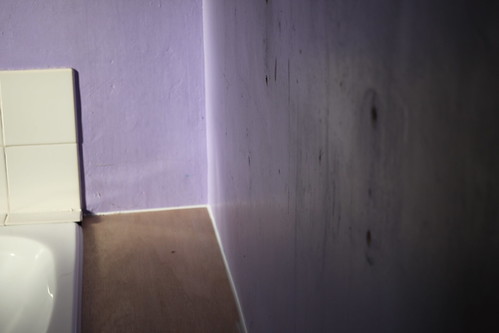We have been toying with the potential performative use of the CCTV room, whether or not to have a performance occur in the room or only through the eyes of the camera’s in the rest of the house. It has been suggested to me that it could be an interesting idea to explore how we, the CCTV operatives, could interact with the technology to make an interesting performance.
This reminded me of a performance and workshop I took part in a few years ago. With my school we worked with a company called Forkbeard Fantasy- a company of two brothers who interacted with film and screens live on stage in a way that I had then never seen before.
All of their performances to date rely heavily on the projection of pre-recorded and live footage, as can be seen above. In The Colour of Nonsense (2010), among other pre-recordings and animations the company played pre-recorded footage of a woman entering an apartment in an elevator. The recording spoke to the actors and they responded to the screen as though the woman was actually on stage, though she was never physically present. The effect of the well rehearsed interaction was comical and fascinating. The actors explain, ““What we were doing was creating a living dynamic between stage & screen, where the filmed sequences become part of the world on stage into which and out of which the performers can move –from stage to screen and back again… and performers in film or on stage communicate and talk with one another across this Celluloid Divide”.” (( http://forkbeardfantasy.co.uk/new_ffs_use_of_film10.html (Accessed 3rd March 2013) ))
Another example of artists using film and projection to create a performance is installation artist Gary Hill. Nick Kaye suggests when commenting on Gary Hills Standing Apart (1996) that video recordings add the ‘capacity of having and presence and a distance at the same time’ ((Kaye, Nick (2007) Multi-Media:Video Installation Performance. London: Routledge p. 135 )). I think that statement is true of any video recording in that the person on screen is in the room without being physically present, but it is particularly relevant to much of Forkbeard’s work.
While he uses recordings and projection Gary Hills work is very different from that of Forkbeards not only because the type of performance is different, but the ways in which they use the technology. Hills Installation piece The Viewer (1996) uses pre-recorded images but without sound. For the piece seventeen men were captured on camera standing still (or barely moving) for ten minutes. These clips of footage were then projected onto a wall at the same time on a continuous loop. The use of video and projection was not to tell a story or to interact with or to represent a character, but was instead to suggest the presence of someone who is not there, to be “fully visible and absent” at the same time” (( Nick Kaye (2007) Multi Media: Video Installation Performance. London: Routledge. P. 131 )) . I think that is notion of omnipresence is one that the me and my fellow CCTV operatives can associate with. During exploration of the house we have communicated with other ‘residents’ about what they are doing or saying though we were never physically present with them.
